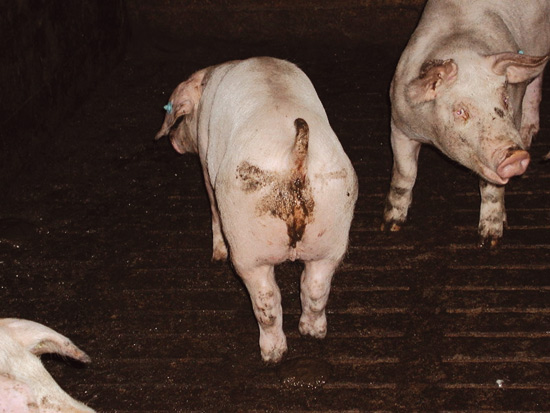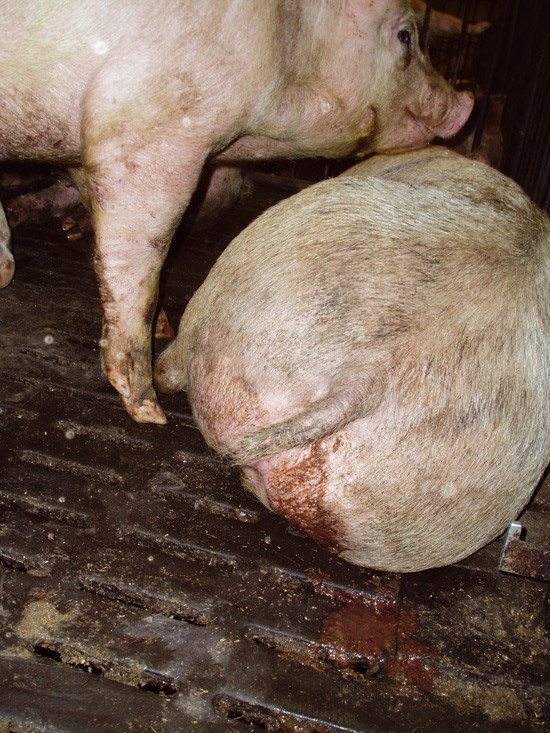4.3.5 Clinical signs of acute Ileitis
The acute form of Ileitis is a much more dramatic and severe type of disease. It is very common to see a number of cases together, usually soon after some contact with infected pigs. Risk factors include movement between buildings and/or pens, introduction of naïve breeding animals to the group, isolation of the animals in testing or gestation barns, transportation of the group on trucks etc. Mortality rates of 12% to 50% of susceptible pigs on affected farms are common. Many pig experts suggest that the acute form of Ileitis is now becoming more common and more visible among pig operations around the world. It seems to be particularly common in Denmark, Belgium, The Netherlands, Canada and the United States of America.
The main clinical features in pigs affected with acute Ileitis are acute onset of red-black tarry faeces, which can then stain the back of the pig. These faeces are often loose and not formed. The loss of blood in the faeces causes anaemia with the affected pigs appearing very pale. Some animals die without initial faecal abnormality and show only marked pallor. If some of the affected pigs are pregnant, then they usually lose their litter in a spontaneous abortion.

Picture 4.3.5 a (by S. Lange)
Pale finisher group pigs with dark red-black diarrhoea faeces – typical case of acute haemorrhagic proliferative enteropathy.
These pigs will not improve unless rapid treatment occurs – many pigs will die in the acute phase of disease.

Picture 4.3.5 b (by S. Lange)
A breeding pig with acute Ileitis. The farmer may find a dead pig – it may have dark red-black diarrhoea faeces.
The disease attacks many pigs in the group in a short time, therefore many cases are noticed at the start, and additional cases may develop in the first week. But after that time, the number of new cases drops. Immediate antibiotic treatment is needed if some affected pigs are to be saved. The older age and high mortality of the affected pigs means that the economic impact of the acute form is very high.
© Boehringer Ingelheim Animal Health GmbH, 2006
All rights reserved. No part of this Technical Manual 3.0 may be reproduced or transmitted in any form or by any means, electronic or photocopy, without permission in writing from Boehringer Ingelheim Animal Health GmbH.






